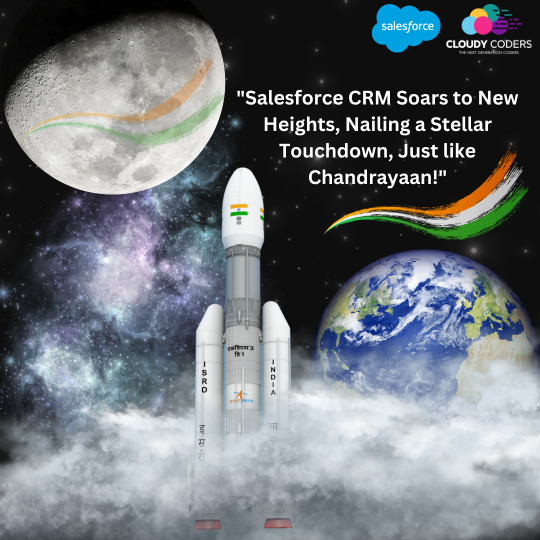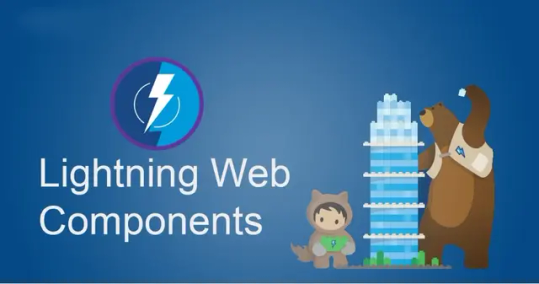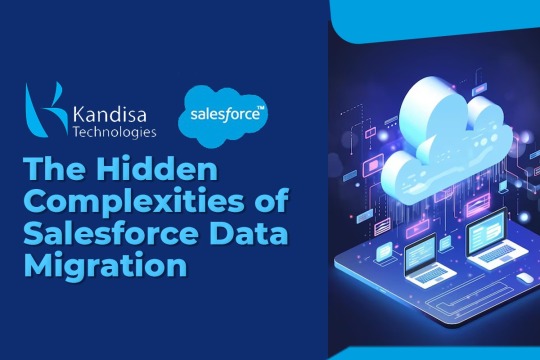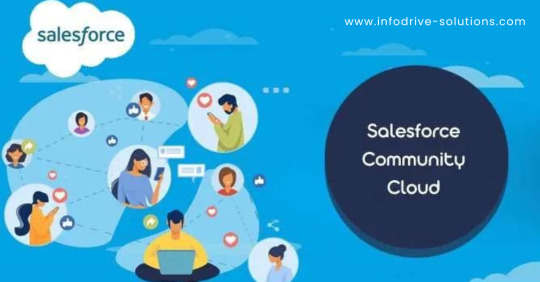#salesforceconsultant
Explore tagged Tumblr posts
Text
Accelerate LWC Development With Salesforce’s Local Development Server

Tired of constantly deploying and refreshing your UI every time you update your Lightning web components (LWCs)?
With Local Dev (beta), you can streamline your workflow by developing your LWCs while previewing them in real-time directly within your Lightning app or Experience Cloud site.
Note: Before you begin make sure that you have the latest version of the CLI command, run “sf update”.
Step 1: Install the Local Dev Plugin To begin, install the Local Dev Plugin using one of the following commands based on your environment:
For Production or Scratch orgs:
sf plugins install @salesforce/plugin-lightning-dev
OR
sf plugins install @salesforce/plugin-lightning-dev@latest
For Sandbox environments:
sf plugins install @salesforce/plugin-lightning-dev@prerelease
Step 2: Enable Local Dev
Navigate to Setup in Salesforce.
In the Quick Find box, type Local Dev.
Select Local Dev and enable the feature.

Step 3: Enable Local Dev for Your Scratch Org
To configure Local Dev for a scratch org:
Open your SFDX project.
Locate the config/project-scratch-def.json file.
In the settings section of the file, add the following key “enableLightningPreviewPref”: true

Step 4: Preview
Use Local Dev to run a preview of the following types of Salesforce projects.
Lightning Experience apps (desktop and Salesforce mobile app)
LWR Sites for Experience Cloud
To preview your application, use the following steps:
Run the command below in the CLI to start the guided setup: sf lightning dev app
Alternatively, if you want to bypass the guided steps, you can directly use the following command in the VS Code terminal: sf lightning dev app — target-org — name — device-type — device-id — flags-dir
Replace the placeholders with the appropriate values for your project. This will launch the application preview.
Guided Steps When Running the Command sf lightning dev app:



Step 4: Build an LWC Component and Experience the Real-Time Magic of Local Dev (Beta).
Start by creating a Lightning Web Component (LWC).
Embed the LWC into any Lightning app. For now, you can add it to any page in the Sales App.
Make changes to your LWC, such as modifying the HTML, CSS, or JavaScript. As soon as you save your code, you’ll experience the power of Local Dev (Beta), with changes reflected in real-time on the UI.
Notice how quickly the LWC updates, without needing to deploy your code or refresh the page. The changes are applied instantly!
Considerations and Limitations:
LWCs automatically update for the following changes only.
1. Basic HTML revisions: Changing component attributes, like in our case
lighting-button variant=”neutral” to variant=”brand”
Get More info: https://www.kandisatech.com/blog-details/accelerate-lwc-development-with-salesforces-local-development-server
#Salesforce#salesforcepartner#Lightning#LWC#SalesforceDevelopment#salesforcelightning#SalesforceLWC#LWCDevelopment#usa#uk#salesforceconsultant
2 notes
·
View notes
Text

Bharat Mata Ki Jay!
With Chandrayaan-3, ISRO has scripted history!
Throwback to Chandrayaan-2, when emotions ran high and our spirits were tested.
But we bounced back, showcasing the true Indian spirit: "Never Say Never!"
Let me share some fun facts about our Chandrayaan-3 mission.
Costing just Rs. 650 crore ($75 million)! That's less than the film 'Adipurush' and just a fraction of Hollywood's 'Avatar' budget! Talk about blockbuster achievements on a budget!
Thank you, ISRO, for redefining success and innovation!
Jai Hind!
#chandrayaan3#chandrayaanmission#chandrayaanlanding#salesforceconsulting#salesforceintegration#salesforceimplementation#help#chandrayaanlaunch#salesforceconsultant
2 notes
·
View notes
Text
Highest Paying Salesforce Jobs & How to Land One

Looking to skyrocket your career in Salesforce? Discover the highest paying Salesforce roles in 2025 and what skills, certifications, and strategies you need to land them. From Salesforce Architects to Consultants, find out where the real money is — and how you can grab your dream job!
Whether you’re a beginner or experienced professional, this guide will help you plan your next move in the Salesforce ecosystem.
#SalesforceJobs#HighPayingJobs#SalesforceCareer#SalesforceAdmin#SalesforceDeveloper#SalesforceArchitect#SalesforceConsultant#TechJobs2025#CareerInSalesforce#CloudComputingJobs#CRMJobs#GetCertified#JobSearchTips
0 notes
Text
Highest Paying Salesforce Jobs & How to Land One

Looking to skyrocket your career in Salesforce? Discover the highest paying Salesforce roles in 2025 and what skills, certifications, and strategies you need to land them. From Salesforce Architects to Consultants, find out where the real money is—and how you can grab your dream job!
Whether you're a beginner or experienced professional, this guide will help you plan your next move in the Salesforce ecosystem.
#SalesforceJobs#HighPayingJobs#SalesforceCareer#SalesforceAdmin#SalesforceDeveloper#SalesforceArchitect#SalesforceConsultant#TechJobs2025#CareerInSalesforce#CloudComputingJobs#CRMJobs#GetCertified#JobSearchTips
0 notes
Text
Highest Paying Salesforce Jobs & How to Land One

Looking to skyrocket your career in Salesforce? Discover the highest paying Salesforce roles in 2025 and what skills, certifications, and strategies you need to land them. From Salesforce Architects to Consultants, find out where the real money is — and how you can grab your dream job!
Whether you’re a beginner or experienced professional, this guide will help you plan your next move in the Salesforce ecosystem.
#SalesforceJobs#HighPayingJobs#SalesforceCareer#SalesforceAdmin#SalesforceDeveloper#SalesforceArchitect#SalesforceConsultant#TechJobs2025#CareerInSalesforce#CloudComputingJobs#CRMJobs#GetCertified#JobSearchTips
0 notes
Video
tumblr
Maximize your Salesforce investment with expert guidance—because ‘out-of-the-box’ works for pizza, not your business!
0 notes
Text
How to Build Custom Apps on Salesforce Using Lightning Web Components (LWC)

Salesforce is a leading platform in cloud-based customer relationship management (CRM), and one of its standout features is the ability to create custom apps tailored to an organization's specific needs. With the introduction of Lightning Web Components (LWC), Salesforce developers can now build faster, more efficient, and more powerful custom applications that integrate seamlessly with the Salesforce ecosystem.
In this blog, we’ll walk you through the process of building custom apps on Salesforce using Lightning Web Components.
What Are Lightning Web Components (LWC)?
Before diving into the development process, let’s briefly explain what Lightning Web Components are. LWC is a modern, standards-based JavaScript framework built on web components, enabling developers to build reusable and customizable components for Salesforce apps. It is faster and more efficient than its predecessor, Aura components, because it is built on native browser features and embraces modern web standards.
Why Use LWC for Custom Apps on Salesforce?
Performance: LWC is optimized for speed. It delivers a faster runtime and improved loading times compared to Aura components.
Reusability: Components can be reused across different apps, enhancing consistency and productivity.
Standardization: Since LWC is built on web standards, it makes use of popular technologies like JavaScript, HTML, and CSS, which makes it easier for developers to work with.
Ease of Integration: LWC components integrate effortlessly with Salesforce's powerful features such as Apex, Visualforce, and Lightning App Builder.
Steps to Build Custom Apps Using LWC
1. Set Up Your Salesforce Developer Environment
Before you begin building, you’ll need a Salesforce Developer Edition or a Salesforce org where you can develop and test your apps.
Create a Salesforce Developer Edition Account: You can sign up for a free Developer Edition from Salesforce’s website.
Install Salesforce CLI: The Salesforce CLI (Command Line Interface) helps you to interact with your Salesforce org and retrieve metadata, deploy changes, and execute tests.
Set Up VS Code with Salesforce Extensions: Visual Studio Code is the most commonly used editor for LWC development, and Salesforce provides extensions for VS Code that offer helpful features like code completion and syntax highlighting.
2. Create a New Lightning Web Component
Once your development environment is set up, you’re ready to create your first LWC component.
Open VS Code and create a new Salesforce project using the SFDX: Create Project command.
Create a Lightning Web Component by using the SFDX: Create Lightning Web Component command and entering the name of your component.
Your component’s files will be generated. This includes an HTML file (for markup), a JavaScript file (for logic), and a CSS file (for styling).
Here’s an example of a simple LWC component:
HTML (template):
html
CopyEdit
<template> <lightning-card title="Welcome to LWC!" icon-name="custom:custom63"> <div class="slds-p-around_medium"> <p>Hello, welcome to building custom apps using Lightning Web Components!</p> </div> </lightning-card> </template>
JavaScript (logic):
javascript
CopyEdit
import { LightningElement } from 'lwc'; export default class WelcomeMessage extends LightningElement {}
3. Customize Your LWC Components
Now that your basic LWC component is in place, you can start customizing it. Some common customizations include:
Adding Dynamic Data: You can use Salesforce data by querying records through Apex controllers or the Lightning Data Service.
Handling Events: LWC allows you to define custom events or handle standard events like button clicks, form submissions, etc.
Styling: You can use Salesforce’s Lightning Design System (SLDS) or custom CSS to style your components according to your branding.
Example of adding dynamic data (like displaying a user’s name):
javascript
CopyEdit
import { LightningElement, wire } from 'lwc'; import getUserName from '@salesforce/apex/UserController.getUserName'; export default class DisplayUserName extends LightningElement { userName; @wire(getUserName) wiredUserName({ error, data }) { if (data) { this.userName = data; } else if (error) { console.error(error); } } }
4. Deploy and Test Your Component
Once you’ve created your components, it’s time to deploy them to your Salesforce org and test them.
Deploy to Salesforce Org: You can deploy your component using the Salesforce CLI by running SFDX: Deploy Source to Org from VS Code.
Testing: You can add your LWC component to a Lightning page using the Lightning App Builder and test its functionality directly in the Salesforce UI.
5. Create a Custom App with Your Components
Once your custom components are developed and tested, you can integrate them into a full custom app.
Use the Lightning App Builder: The Lightning App Builder allows you to create custom apps by dragging and dropping your LWC components onto a page.
Set Permissions and Sharing: Ensure that the right users have access to the custom app by configuring user permissions, profiles, and sharing settings.
6. Iterate and Improve
Once your app is live, collect user feedback and iteratively improve the app. Salesforce offers various tools like debugging, performance monitoring, and error tracking to help you maintain and enhance your app.
Best Practices for Building Custom Apps with LWC
Component Modularity: Break down your app into smaller, reusable components to improve maintainability.
Optimize for Performance: Avoid heavy processing on the client-side and use server-side Apex logic where appropriate.
Use Lightning Data Service: It simplifies data management by handling CRUD operations without the need for Apex code.
Follow Salesforce’s Security Guidelines: Ensure that your app follows Salesforce’s security best practices, like field-level security and sharing rules.
Conclusion
Building custom apps on Salesforce using Lightning Web Components is an effective way to harness the full power of the Salesforce platform. With LWC, developers can create high-performance, dynamic, and responsive apps that integrate seamlessly with Salesforce’s cloud services. By following best practices and leveraging Salesforce’s tools, you can build applications that drive business efficiency and enhance user experience.
If you're interested in building custom Salesforce applications, now is the perfect time to dive into Lightning Web Components and start bringing your ideas to life!
0 notes
Text
Which Role is Best in Salesforce?
Salesforce is now the foundation of customer relationship management (CRM) for businesses all around the world. Salesforce Role helps businesses increase productivity, enhance customer happiness, and streamline procedures with its robust cloud-based capabilities. However, it can be challenging for newcomers to decide which career path to take because the Salesforce ecosystem offers so many distinct positions and career trajectories. read more

#Salesforce#SalesforceCareers#SalesforceRoles#SalesforceDeveloper#SalesforceAdmin#SalesforceConsultant#SalesforceArchitect#SalesforceJobs#SalesforceTraining#SalesforceDevelopment#SalesforceCareerPath#SalesforceTips#CRM
0 notes
Text
SALESFORCE - SPARK TECHNOLOGIES
As a leading IT services provider, Spark Technologies offers global business solutions to improve efficiency,add value, and reduce costs. We design, develop, implement, manage, and optimize systems for your business processing and infrastructure needs,whether private or public sector, in-house or outsourced. Our services-led approach enhances IT environments and drives better business outcomes through strategic design,deployment,and resource management,allowing you to focus on core activities.click here for more

0 notes
Text

Experience Salesforce's Aura with Webapphealing Technology
Trying to use Salesforce CRM to transform your company? One of the top Salesforce consulting companies in the US and India, Webapphealing, may assist.
Our group of licensed professionals offers thorough solutions for:
Install & Customize Salesforce: We'll make Salesforce products fit your current workflows perfectly, ensuring your CRM is successful.
Sustain Salesforce Potential: Our advisors has the expertise to assist you in utilizing every Salesforce feature, optimizing your return on investment.
Ongoing Support: To guarantee that your Salesforce solution keeps up with your changing needs, we provide ongoing direction and assistance.
Contact Webapphealing Technology today and discover the adverse effects of Salesforce.
Visit Us: www.webapphealing.com
Call Us +91 98911 07522
Contact Us: [email protected]
#Salesforcecrestpartner#salesforceconsulting#salesforcepartner#salesforceconsultant#SalesforceConsultingCompanyinUSA#webapphealing#salesforcecrm#webapphealingtechnology#UK#India#USA
0 notes
Text

Ever wondered, what is a Salesforce consultant? With Salesforce leading the CRM market and generating significant revenue, these experts are your key to effectively customising and optimising the platform. Discover how they can help in maximising your ROI in our latest blog.
0 notes
Text
The Hidden Complexities Of Salesforce Data Migration

Data migration is far more than a simple transfer of information. When organizations approach Salesforce deployment, they often underestimate the intricate process of moving data from legacy systems to a new, dynamic platform.
The Migration Landscape
Successful data migration begins with comprehensive preparation. Organizations must invest time in understanding their data ecosystem and preparing for a seamless transition.
Key preparatory elements include-
Conducting a thorough data audit
Mapping existing data structures
Identifying potential migration challenges
Establishing clear migration objectives
Creating a detailed transformation strategy
The complexity of data migration goes beyond technical challenges. It requires a strategic approach that balances technical precision with business objectives, ensuring that every piece of data serves a meaningful purpose in the new Salesforce environment.
The Five-Stage Migration Framework
Stage 1
Discovery and Assessment
The initial stage focuses on understanding both source and target systems-
· Conducting comprehensive system audits
· Creating detailed data inventory
· Identifying data relationships and dependencies
· Assessing data quality and completeness
· Establishing migration scope and requirements
Stage 2
Planning and Design
This stage establishes the strategic foundation-
· Developing detailed migration architecture
· Creating field and object mapping documents
· Establishing transformation rules
· Designing backup and rollback procedures
· Setting up validation criteria and success metrics
Stage 3
Data Preparation and Backup
Critical pre-migration activities include-
· Performing full system backup of source data
· Cleaning and standardizing data
· Removing duplicates and redundant information
· Creating backup verification procedures · Establishing disaster recovery protocols
Stage 4
Execution and Migration
The actual migration process involves
· Running test migrations in sandbox environments · Performing incremental data loads
Get More info: https://kandisatech.com/blog-details/The-Hidden-Complexities-of-Salesforce-Data-Migration
#Salesforce#DataMigration#BusinessGrowth#SalesforceDataMigration#salescloud#sfdc#salesforcelearning#CRM#salesforceconsultant#salesforcedevelopers#salesforcepartner
0 notes
Text

A Salesforce Community is a CRM solution that helps you to build a digital cloud-based space within which you can communicate and share information. Different businesses and brands can build various communities that service different groups and organizations.
Our expert consulting services ensure that your community strategy is optimized for maximum engagement and collaboration. From seamless implementation to ongoing support, our certified Salesforce consultants are here to guide you every step of the way. Discover the difference Community Cloud can make for your business today! Contact us for a consultation.
Click here to read more: https://infodrive-solutions.com/salesforce-cpq-and-community-cloud-services.html Email Us at: [email protected] Address: 135 MIDDLE RD, #02-21 BYLANDS BLDG, SINGAPORE 188975
#SalesforceCommunityCloud#CommunityCloudServices#CRMConsulting#CloudImplementation#DigitalTransformation#CollaborationTools#CustomerEngagement#businessgrowth#crmsolution#salesforceconsultant#salesforcecommunity#infodrivesolutions
0 notes
Text
Highest Paying Salesforce Jobs & How to Land One

Looking to skyrocket your career in Salesforce? Discover the highest paying Salesforce roles in 2025 and what skills, certifications, and strategies you need to land them. From Salesforce Architects to Consultants, find out where the real money is—and how you can grab your dream job!
Whether you're a beginner or experienced professional, this guide will help you plan your next move in the Salesforce ecosystem.
#SalesforceJobs#HighPayingJobs#SalesforceCareer#SalesforceAdmin#SalesforceDeveloper#SalesforceArchitect#SalesforceConsultant#TechJobs2025#CareerInSalesforce#CloudComputingJobs#CRMJobs#GetCertified#JobSearchTips
0 notes
Text
Highest Paying Salesforce Jobs & How to Land One

Looking to skyrocket your career in Salesforce? Discover the highest paying Salesforce roles in 2025 and what skills, certifications, and strategies you need to land them. From Salesforce Architects to Consultants, find out where the real money is—and how you can grab your dream job!
Whether you're a beginner or experienced professional, this guide will help you plan your next move in the Salesforce ecosystem.
#SalesforceJobs#HighPayingJobs#SalesforceCareer#SalesforceAdmin#SalesforceDeveloper#SalesforceArchitect#SalesforceConsultant#TechJobs2025#CareerInSalesforce#CloudComputingJobs#CRMJobs#GetCertified#JobSearchTips
0 notes
